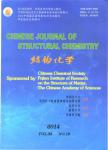Bonding of Hydroxyl and Epoxy Groups on Graphene:Insights from Density Functional Calculations
Bonding of Hydroxyl and Epoxy Groups on Graphene:Insights from Density Functional Calculations作者机构:Department of ChemistryFuzhou University School of Chemistry & Chemical EngineeringGuangxi University Fujian Provincial Key Laboratory of Photocatalysis-state Key Laboratory Breeding BaseFuzhou University
出 版 物:《Chinese Journal of Structural Chemistry》 (结构化学(英文))
年 卷 期:2013年第32卷第10期
页 面:1475-1484页
核心收录:
学科分类:07[理学] 070305[理学-高分子化学与物理] 0703[理学-化学]
基 金:supported by the Foundation of State Key Laboratory of Coal Combustion of Huazhong University of Science and Technology(FSKLCC1110) the Natural Science Foundation of Fujian Province(2012J01032,2012J01041)
主 题:density functional theory graphene hydroxyl epoxy bonding
摘 要:Density functional theory and GGA-PW91 exchange correlation function were performed to simulate the bonding behavior of hydroxyl and epoxy groups on the graphene surface. We compared the different binding energies for two epoxy groups, as well as one hydroxyl group and one epoxy group on all possible positions within a 6-fold ring, respectively. The calculated results suggest that two oxygen-containing groups always tend to bind with the neighboring carbon atoms at the opposite sides. Moreover, two hydroxyl groups on the meta position are unstable, and one of the hydroxyl groups easily migrates to the para position. In contrast to the disperse arrangement, the aggregation of multiply hydroxyl groups largely enhances the binding energy of every hydroxyl group. It is worth noting that the binding sites and hydrogen bonds play an important role in stability. Our work further points out the number of oxygen-containing groups and the location of oxide region largely influence the electronic properties of graphene oxide.



